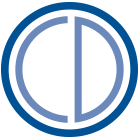About one in three people with OCD do not get better after trying first-line treatments. For patients with severe, treatment-resistant OCD, Deep Brain Stimulation (DBS) is an effective option, but… Read more »
Understanding and treating OCD in older adults
With the population aging globally, the number of older adults with OCD is expected to double within the next 30 years. We currently lack important information about the best possible… Read more »
A precision medicine approach to OCD treatment: Targeting neuroinflammation
Much prior research has found evidence of brain inflammation’s role in the development of OCD. As a result, anti-inflammatory medications have been suggested as a potential avenue for treating symptoms… Read more »
Waxing and waning: Using ecological momentary assessment to assess chronotype as a potential mechanism of within-day obsessive-compulsive disorder symptom fluctuations
Prior research has suggested links between a person’s sleep habits, their biological clock (circadian rhythm), and OCD symptoms. Many people with OCD report that their symptoms are better or worse… Read more »
Optimization of parent-led exposure delivery in pediatric OCD
When children develop OCD, the most effective treatment available for them is cognitive behavioral therapy (CBT) with exposure and response prevention (ERP). Children engage in exposure work where they intentionally… Read more »
Pairing tVNS and exposure and response prevention to improve symptoms of OCD
Cognitive behavioral therapy (CBT) with exposure and response prevention (ERP) is a safe, effective, and proven treatment for OCD. Some researchers believe that ERP’s efficacy lies behind helping patients “un-learn”… Read more »
How disease and medication shape the brain, and how the brain predicts individual treatment response: Learning from global collaboration
Brain imaging has revolutionized our understanding of mental health disorders like OCD by revealing important information about which parts of the brain are impacted by OCD and informing treatment approaches…. Read more »
Examining circadian and non-circadian phenotypes in obsessive compulsive disorder with delayed bedtimes
Relapse rates following OCD treatment are 50%, suggesting the existence of unidentified and untreated mechanisms in OCD. One of these mechanisms relates to circadian rhythm – the body’s biological clock…. Read more »
Perinatal obsessive compulsive disorder: A person-centered, dynamic systems approach
1 in 5 parents experience perinatal distress (PND), significant mental health challenges that impact their – and their children’s and families’ – lives and wellbeing. While perinatal mood and anxiety… Read more »
CBT augmentation to promote medication discontinuation in pediatric OCD
Several treatments have shown efficacy for treating pediatric OCD: cognitive behavioral therapy (CBT), medication with a serotonin reuptake inhibitor (SRI), and their combination (SRI+CBT). Although best practice suggests using CBT… Read more »
